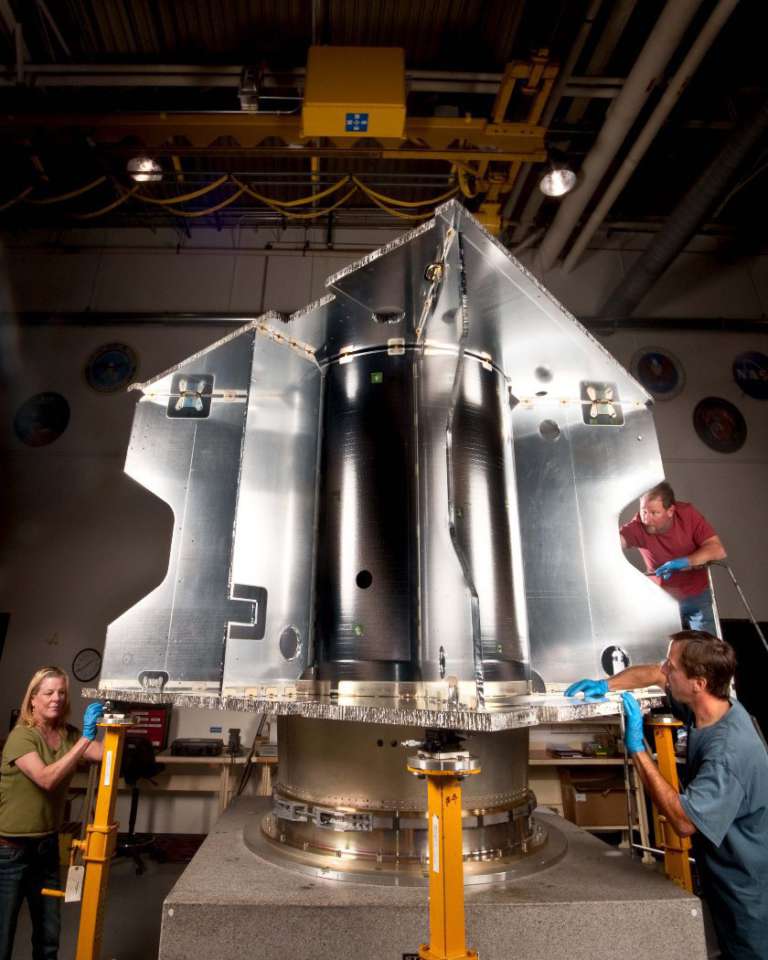Emily Lakdawalla • Sep 26, 2011
MAVEN's baby picture
Many, many years can pass from the time the idea of a space mission was born to the moment it actually launches. Even when a mission is selected for study or funding, its existince is precarious until construction starts on the actual ship that will one day be stuck on the tip of a rocket and launched off of Earth. A new Mars mission, MAVEN, has finally leapt the hurdle separating its existence as an idea from its material existence. Here's MAVEN's baby picture: the just-completed "primary structure" of the spacecraft.

Construction only recently began, with the MAVEN mission's successful completion of its Critical Design Review (a formal review when NASA Headquarters examines the proposed design, budget, etc. for a spacecraft and gives -- or doesn't give -- official approval for construction to start). The MAVEN website describes this part of the craft in detail: The primary structure is a flattened cube, 2.3 meters square by 2 meters high. Built out of composite panels comprised of aluminum honeycomb sandwiched between graphite composite face sheets and attached to one another with metal fittings, the entire structure only weighs 125 kilograms. At the center of the structure is the 1.3-meter-diameter "core cylinder" that encloses the hydrazine propellant tank and serves as the primary vertical load-bearing structure. The tank will eventually hold approximately 1640 kilograms of fuel.
One day, MAVEN will orbit Mars to attempt to understand its upper atmosphere and what happened to the thicker atmosphere that Mars must once have had. Just over two years remain until MAVEN's planned November 18, 2013 launch. It will arrive at Mars on or about September 22, 2014 and be placed into an elliptical orbit with a periapsis altitude of 150 kilometers and an apoapsis of 590 kilometers. Over the course of a year (October 2014 to October 2015), it'll perform measurements of Mars' upper atmosphere, ionosphere, planetary corona, the solar wind, and solar extreme ultraviolet radiation. It will also perform five 5-day "deep dip" campaigns to sample Mars' atmosphere more directly.
Let’s Go Beyond The Horizon
Every success in space exploration is the result of the community of space enthusiasts, like you, who believe it is important. You can help usher in the next great era of space exploration with your gift today.
Donate Today

 Explore Worlds
Explore Worlds Find Life
Find Life Defend Earth
Defend Earth


